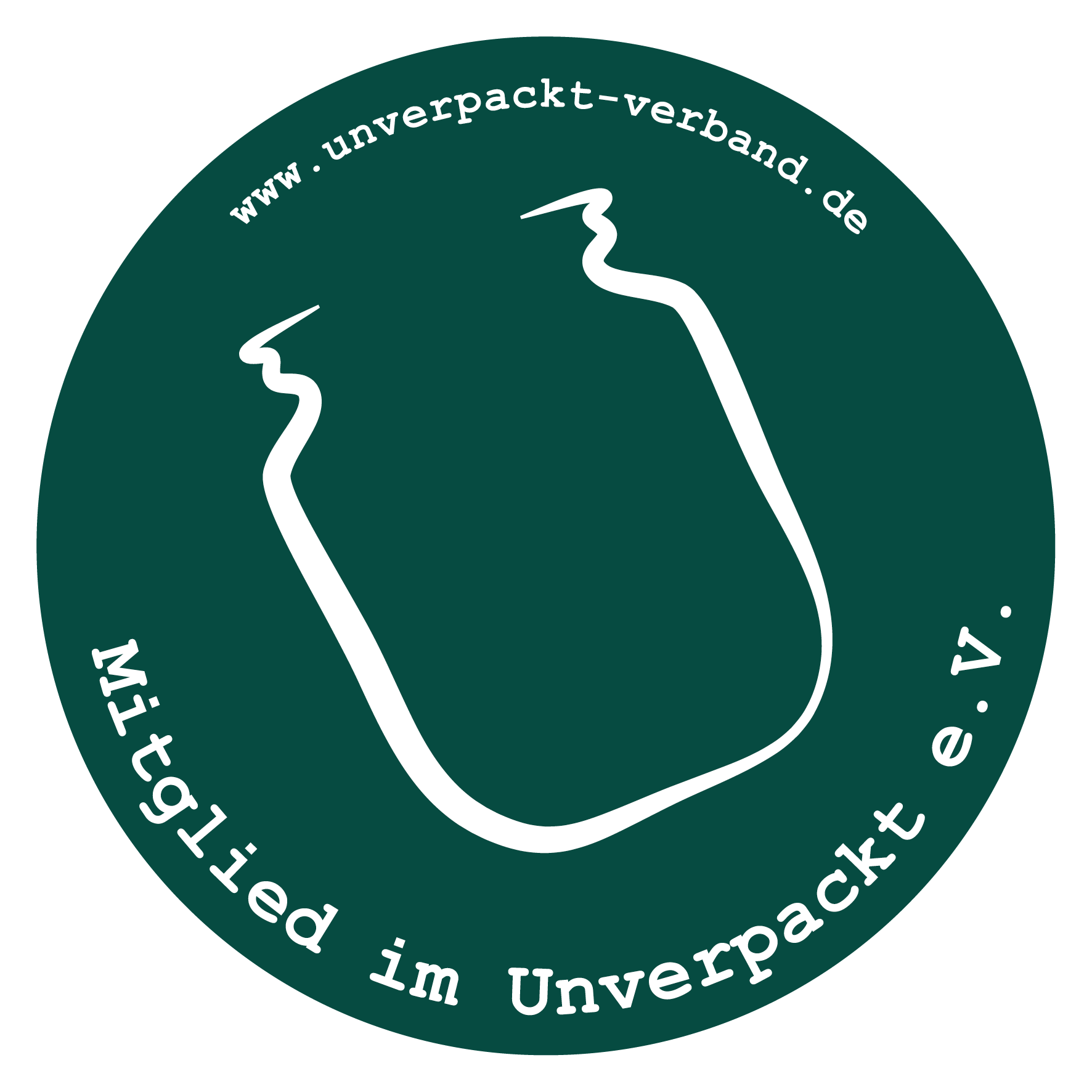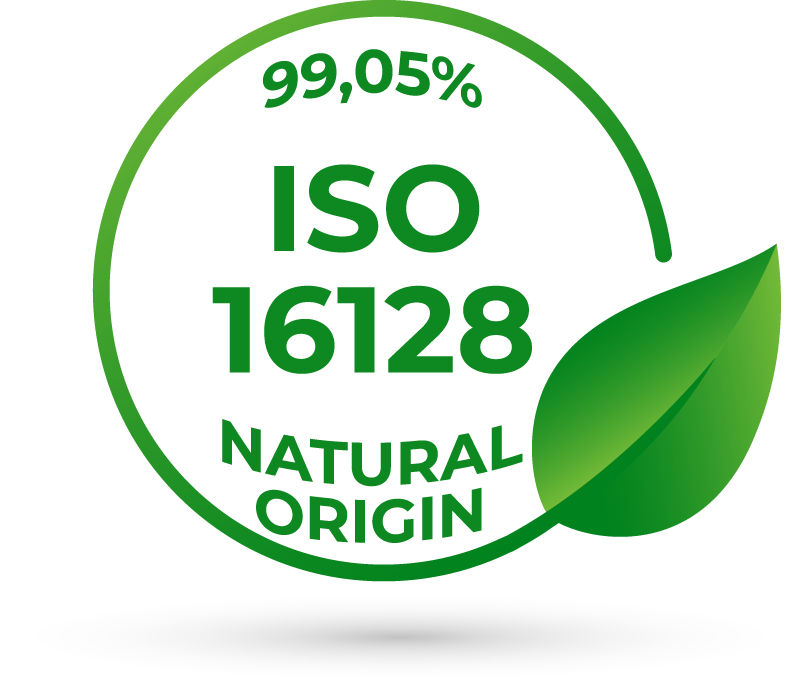GreenClaim
GreenClaims
Sustainable cosmetics that impress
Sustainability is crucial – our GreenClaims prove it! They show at a glance how environmentally friendly our cosmetics are, whether through refill concepts, reduced emissions, waste avoidance or energy savings. Transparent and credible GreenClaims strengthen trust and make our brand particularly attractive to the environmentally conscious. Discover now how sustainable our cosmetic products really are and opt for environmentally friendly beauty!
Up to 94% less packaging waste
When choosing skincare products, more and more people are attaching importance to sustainability. A major factor here is the packaging waste that arises from the use of conventional products. With our JONDI&MOON concept, we can achieve a significant reduction in packaging waste. On average, 4.4 facial care products containing 50 ml each are used per year, which equates to a total of 220 ml. Traditionally, these products are sold in glass bottles, which weigh around 75.9 g including the label and outer packaging. These 75.9 g are made up as follows:
- 62.5 g glass, which is only partially recyclable,
- 5.5 g pump, which is not recyclable,
- 0.3 g label, which is not recyclable, and
- 7.6 g cardboard, which is partially recyclable.
The problem: if this packaging is not separated properly, it cannot be recycled at all. If you extrapolate the weight to the annual consumption, this results in packaging waste of around 333.96 g per year (75.9 g x 4.4 products).
Our solution: refill pouches instead of disposable packaging
In contrast, a 50 ml refill pouch including lid weighs just 4.5 g. For the annual consumption of 4.4 products, this results in only 19.8 g of recyclable PP waste (4.5 g x 4.4 products). That is an impressive saving of 94.07% packaging waste compared to conventional glass packaging!
Comparison with standard airless dispenser packaging
Our refill pouches also perform excellently in comparison with a standard airless tube made of composite material, which weighs around 39.3 g including label and outer carton. With a usage of 4.4 products per year, this results in a packaging waste of 172.92 g. With our refill pouches, 88.55% of the packaging waste can be saved!
Additional information on consumption
An average application with a Metropolitan pump (standard pump for DIN 18 glass bottle) corresponds to 0.3 ml (2 strokes). If used twice a day (morning and evening), this results in a consumption of 0.6 ml per day. Extrapolated to 365 days, we arrive at around 219 ml per year, which corresponds to the consumption of 4.4 50 ml bottles.
Our sustainable solution not only helps to drastically reduce packaging waste, but also supports a more responsible use of resources.
Up to 84 % fewer emissions
What is behind the GreenClaim?
Did you know that the average person uses 4.4 cosmetic facial care products per year? With the innovative JONDI&MOON Refill System, you can not only reduce packaging waste, but also significantly cut CO2 emissions.
The first year in comparison: JONDI&MOON Refill System vs. conventional glass bottles
The JONDI&MOON Refill System only requires one glass bottle and 3.4 refill bags per year, which corresponds to a total of 116.315 g of CO2. In comparison, the use of 4.4 glass bottles without the refill option generates 385.224 g of CO2. This means: With the refill system, you save 268.909 g of CO2, which corresponds to a saving of 69.81 %!
Comparison with standard airless dispenser packaging
A standard airless dispenser is made of non-recyclable composite material. For 4.4 dispensers, 484.176 g of CO2 are generated, compared to only 116.315 g for the JONDI&MOON Refill System. The result: A saving of 367.861 g Co2 or 75.98 % less emissions!
Long-term benefits: Comparison over 2 years
Over a period of two years, the savings become even clearer: the JONDI&MOON Refill System generates only 153.539 g of CO2 during this time, while 8.8 airless dispensers generate 968.352 g of CO2. This corresponds to an impressive reduction of 814.813 g Co2 or 84.14 % less emissions!
Additional facts on cosmetic consumption:
On average, 0.3 ml is used per application (2 strokes of 0.15 ml each), which results in 0.6 ml per day if applied twice a day (morning and evening).
Extrapolated to one year, this results in a consumption of 219 ml, i.e. 4.4 bottles of JONDI&MOON SkinCare.
Weight and emissions of the JONDI&MOON packaging:
- Glass bottle: 62.5 g glass yields 66.9 g CO2
- Pump: 5.5 g PET cause 15.4 g CO2
- Labels: 2 pieces (0.3 g PP each) yield 0.6 g CO2
- Outer carton and banderole sticker: 7.6 g paper yields 4.7 g CO2
With JONDI&MOON you are not only doing something good for your skin, but also for the environment – sustainable, efficient and environmentally friendly!
Around 83 % energy savings
Our green claim clearly shows that a refill pouch requires around 83% less energy to produce than a glass bottle. But why is that? Let’s take a closer look at the differences in the manufacturing process.
In the production of glass bottles, raw materials such as sand, lime and soda have to be heated to extremely high temperatures in order to melt – up to 1,600 degrees Celsius! Even if 65% recycled glass is added, at least 1,400 degrees Celsius is still required. This enormous heat requires a considerable amount of energy and leads to correspondingly high CO₂ emissions.
In comparison, the production of our refill pouches (made from PP material) is much more energy-efficient. Only temperatures of around 265 degrees Celsius are required here – around 83% less than in glass production. Thanks to this drastic reduction in the energy required, our refill pouches, which are made from mono-material and are 100% recyclable, make a major contribution to reducing the ecological footprint.
The advantages are obvious: less energy consumption not only means direct relief for the environment, but also a significant reduction in emissions. This makes it clear that refill pouches are a more sustainable alternative to conventional glass packaging.
Further details on the energy savings and environmental benefits can be found in the following sources:
Source 1): https://www.kunststoff-magazin.de/thermoplaste/energie–logistikaufwand–rohstoffe-energiebilanz-im-vergleich–glas-oder-pet-.htm
Source 2): https://data.probas.umweltbundesamt.de/datasetdetail/process.xhtml?uuid=f5e31dcd-4c13-44f6-812f-8501a9cef2d2&version=02.44.152&stock=PUBLIC&lang=de
Up to 69 % fewer emissions
Our toothpaste has particularly environmentally friendly packaging! Our green claim states that our packaging causes 43% to 69% less CO2 emissions compared to conventional toothpaste packaging. But what does that mean in concrete terms?
How we arrive at these figures:
For the comparison, we use a combination of our 250 ml glass bottle and our 250 ml refill pouch as a basis. Here are the details of our calculation:
In the first year:
1 glass bottle (250 ml): Weighs 138.3 g of glass.
Glass has a CO2 emission of 1.07 kg CO2 per kg.
This results in 147.98 g CO2.
1 pump made of PET: Weighs 11.9 g.
PET has a CO2 emission of 2.8 kg CO2 per kg.
This results in 33.32 g CO2.
2 labels: Weigh a total of 0.3 g.
PP has a CO2 emission of 1.88 kg CO2 per kg.
This results in 0.564 g CO2.
Outer carton and banderole sticker: Together weigh 17.4 g of paper.
Paper has a CO2 emission of 0.62 kg CO2 per kg.
This results in 10.788 g CO2.
Total emissions for the first year: 192.653 g CO2
For the refill bag:
1 PP bag: Weighs 7.2 g.
PP has a CO2 emission of 1.88 kg CO2 per kg.
This results in 13.536 g CO2.
As we use a refill pouch to replace the packaging in the first year, this results in a total emission of 199.421 g of CO2
compared to conventional toothpaste packaging:
Conventional packaging often consists of five 25 g plastic tubes.
The CO2 emissions for these tubes amount to 350 g CO2.
Savings in the first year: 350 g CO2 – 199.421 g CO2 = 150.579 g CO2, which corresponds to a reduction of around 43.02 %.
Long-term view:
If we make the comparison over two years, things look even better. Using five 250ml standard sizes over two years, we have:
2 glass bottles and 4 refill pouches: a total of 219.725 g CO2.
For comparison:
10 plastic toothpaste tubes: 700 g CO2.
Savings over two years: 700 g CO2 – 219.725 g CO2 = 480.275 g CO2.
This corresponds to a reduction of around 68.61%.
Why this is important:
Our packaging is designed to produce significantly less CO2 emissions than conventional packaging. By using glass and refillable pouches, we actively contribute to protecting the environment and help you reduce your ecological footprint.
With our toothpaste, you can not only ensure clean oral care, but also make an active contribution to environmental protection!
Sources:
Around 94% less packaging waste
What is behind the Green Claim?
Each of us uses an average of five tubes of toothpaste per year, with each tube containing around 75 ml. Each of these tubes is wrapped in plastic packaging that weighs around 25g. This adds up to around 125 g of plastic waste per year, which is not recyclable.
In comparison, our refill pouch with lid weighs only 7.2g. If we look at this difference and extrapolate the figures for a whole year, we can see that we can produce around 94.24% less packaging waste. This means we are making a significant contribution to reducing plastic waste by offering a more environmentally friendly option.
Consumption analysis: The assumption is based on the average annual consumption of 5 tubes of toothpaste, which together contain around 375 ml.
By using our refill system, you not only contribute to environmental protection, but also enjoy a more practical and sustainable solution for your dental care.






